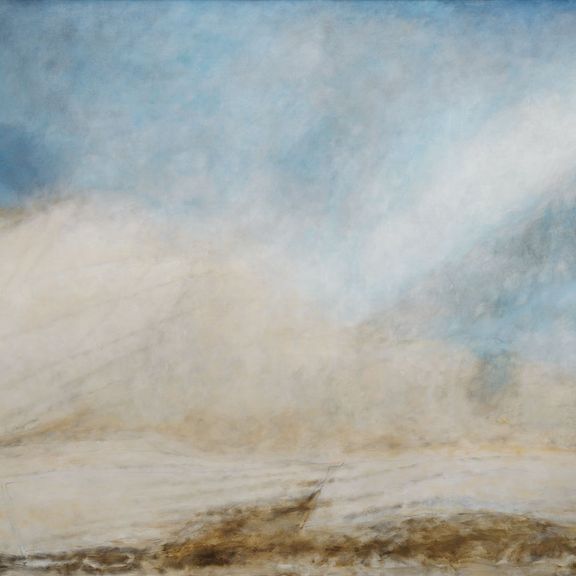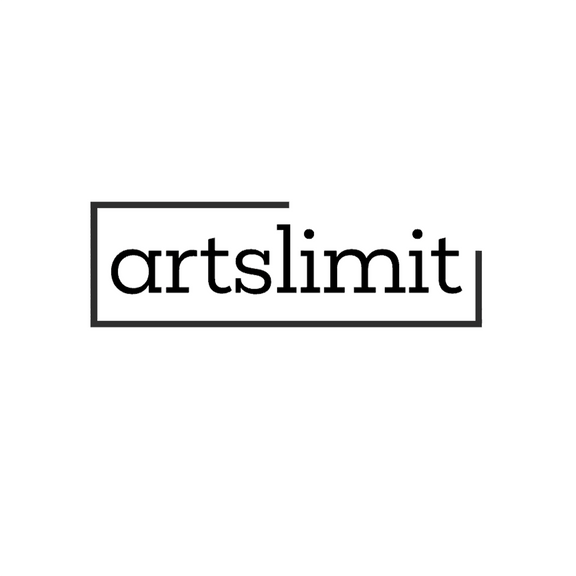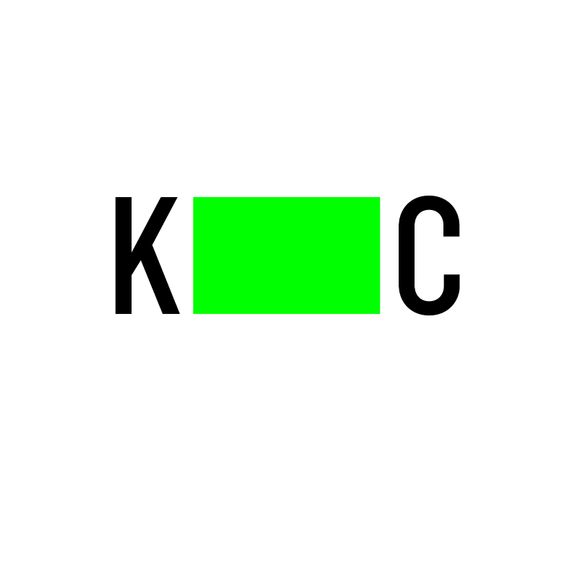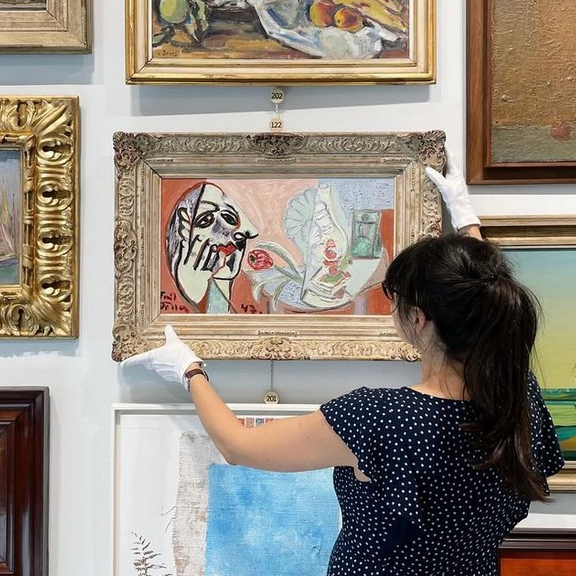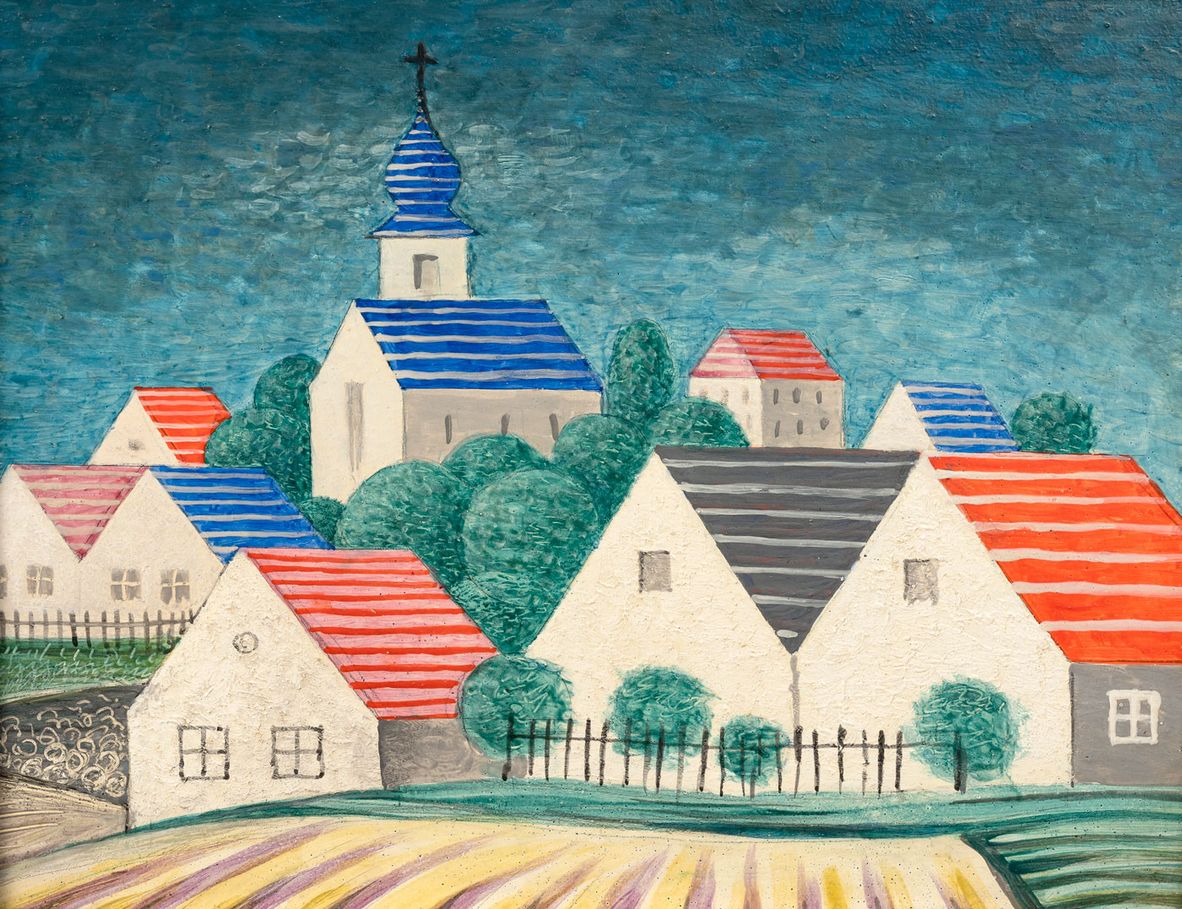
mixed media (tempera, oil) on wooden board
1947
top right
28 × 36 cm
frame
Starting price: 2,600,000 CZK Final price: 4,080,000 CZK
Auction 84th, Lot 99 The characteristically charming panorama of a picturesque Czech town is an enchanting example of Zrzavý's delicate feeling for the atmosphere and the character of landscapes and architecture. As one of the most prominent painters of the Czech art scene in the first half of the 20th century, Zrzavý quickly became known to art lovers for his typically soft style of painting. The theme of a village or town was one of the painter's most popular motifs, next to boats swaying on the sea and vistas from trips around Italy and France. Most of these Czech rural scenes were based on inspiration from his native Vysočina, where he returned repeatedly during his life. Although this lovely, poetic painting bears the author's original name Small Czech Town on the back, it is quite obvious that it depicts the town of Krucemburk, which was close to his heart. The fact that it is a place Zrzavý knows intimately is obvious at first glance. This idylic scene, embodied in a dreamy, timeless atmosphere, leaves a deep suggestive impression on the observer. The overall effect of the painting is accentuated by the confident contrasting colour scheme, the way the artist worked with pasto and his brilliant drawing skills with the other end of the brush in wet paint. It is therefore not surprising that this romantic, typically Czech veduta of high collector and gallery value was personally chosen by Zrzavý's friend, the artist Ondřej Sekora, for his collection. The work was exhibited in 2018 in the Kampa Museum at the exhibition Jan Zrzavý from the collections of private collectors, in the catalogue of which it is also reproduced (p. 73). It is in the original artist's adjustment. Assesed during consultations by prof. J. Zemina and PhDr. R. Michalová, Ph.D. From the attached expertise by PhDr. K. Srp: "[...] Although Zrzavý often painted village motifs during the Second World War, he returned to them quite often even after it, as they provided him with a source of artistic stimuli with which he could deal as he wished. He thus reached the threshold of pure art, as shown in the strongly geometrized houses, whose white facades he distinguished by another type of brushstroke, using white paint impasto, while for the horizontally divided roofs he chose distinctive red, blue and gray colours. [...]“.
